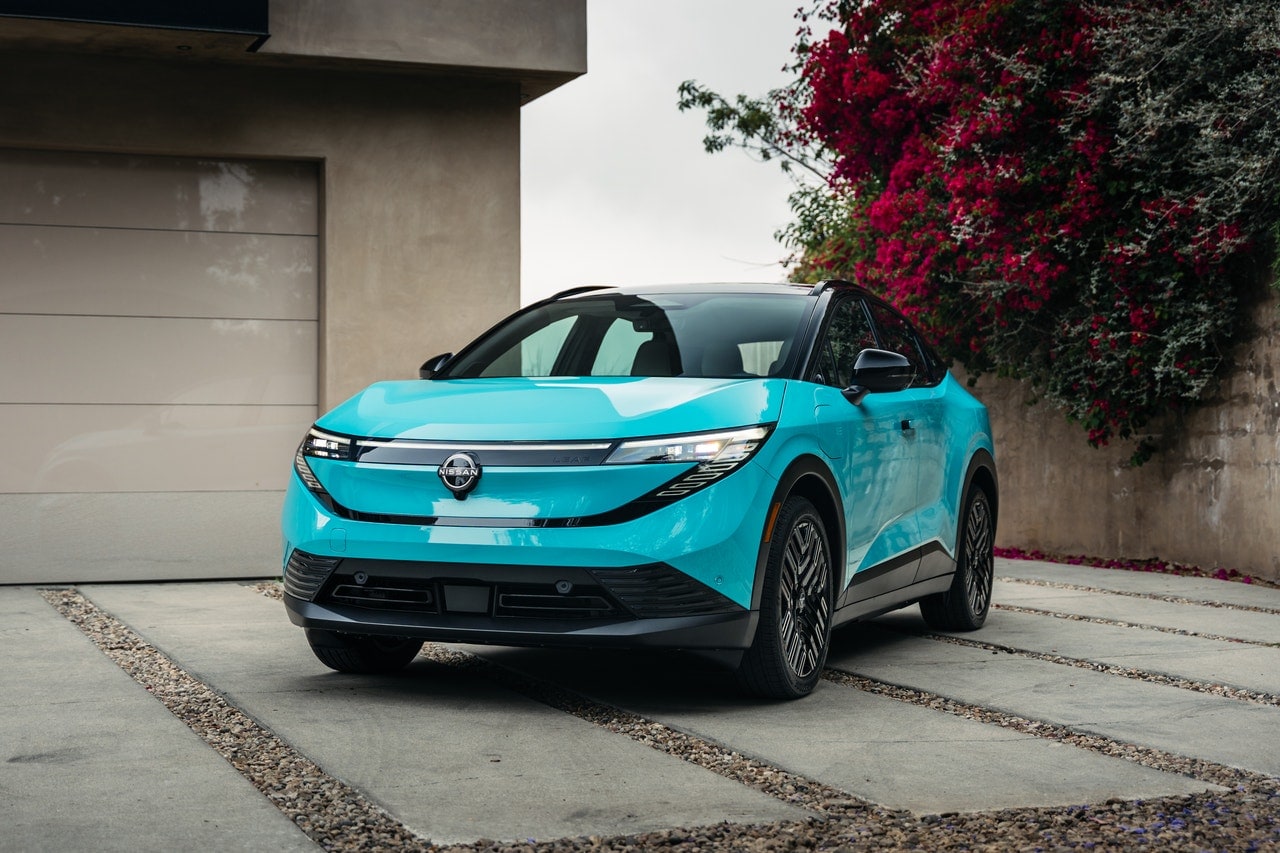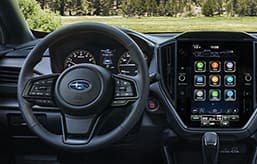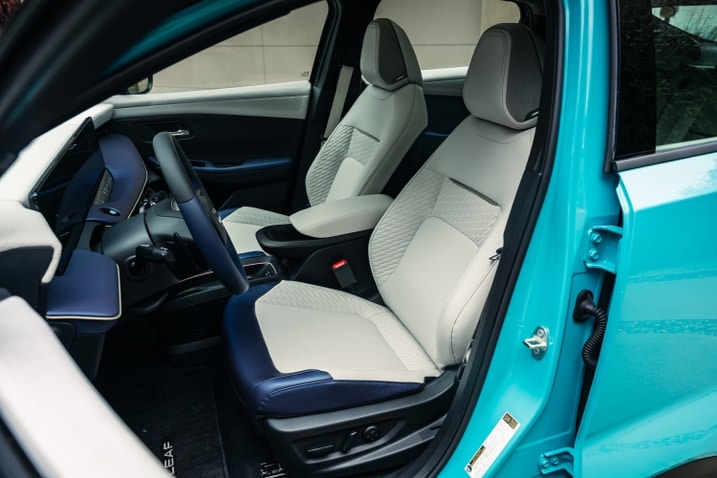- The Nissan Leaf enters its third generation for 2026.
- The newly crossover-ified EV has more range and power available than ever before.
- Even with its upgrades, the Leaf doesn't break new ground in the EV space.
The 2026 Nissan Leaf Finally Catches Up to the Competition
The new Leaf trades its old hatchback design for crossover SUV digs
The original Nissan Leaf took EVs mainstream. It may not have offered much range — its 24-kWh battery pack was rated for only 73 miles on a charge — but its relatively low price drew in hundreds of thousands of buyers around the world. The second-generation Leaf was a big improvement, offering more range at a similarly low price point. But it's struggled in recent years: The affordable EV segment has expanded drastically, and newer competitors like the Chevy Equinox EV offer more range, style and tech for around the same amount of money.
Enter the third-generation Leaf, which Nissan hopes will make its bread-and-butter EV worth considering again. It's all-new and gets more room, more battery, and more range, but has Nissan gone far enough to make it a real contender?
Hatchback be gone
Gone is the traditional hatchback body style of the first two generations of Leaf, replaced by a slantback crossover SUV-ish egg shape à la the Tesla Model Y. It may not be the most distinctive look when viewed in profile, but with a drag coefficient of just 0.26, it's more aerodynamic than the outgoing Leaf. Pop-out front door handles keep the sides smooth, too, part of Nissan's emphasis on aero efficiency.
While the overall shape may be a bit anonymous, the rest of the Leaf's styling is distinctive and nicely detailed, especially at the rear. The upgraded LED taillights on the Platinum+ trim seen here feature two oval elements in the inner lights and three in the outer unit, part of a "2-3" motif that Nissan incorporates throughout the Leaf — in Japanese, "2" is pronounced "ni" and 3 is "san," a clever way for Nissan to incorporate its brand name without extra badges. Up front, sharp-edged headlights curve into a light bar (can we please stop this trend?). The overall look is crisp and modern, if a bit soft around the edges.
The last Leaf was praised for its available unique wheel design, and the new one builds on that trend. This Platinum+ model's 19-inch wheels — a first for the Leaf — incorporate similarly elongated ovals as the taillights across what's effectively a tri-split four-spoke wheel, and they look perfectly funky. Nissan hasn't released images of lesser Leaf trims yet but showed me photos of an SV+, and it has even cooler 18-inch rims.
A much upgraded cabin
The new Leaf's cabin is massively improved over the outgoing model's. It feels open and airy, especially with the available electronically dimmable panoramic glass roof. Materials in the top Platinum+ trim we got hands-on with were solid overall, and I especially appreciated the fabric textile that stretches across the top of the dash and doors.
The available two-tone white and blue color combo is great, too, but less great is the upholstery Nissan uses for these seats. It's a sustainable faux-leather-like material called TailorFit, and Nissan claims it's both softer and more durable than real leather. I found it to be more akin to a nylon wetsuit, though I do appreciate the sustainability aspect.
The cockpit is dominated by two large screens: Dual 12.3-inch units are standard, while the dual 14.3-inch screens seen here are available on higher trims; they're super responsive and feature sharp graphics. Leafs (Leaves?) with these screens also get full Google integration, which means Google Maps, Google Assistant, and other Google apps are available natively within the infotainment system.
Interestingly, Leafs without Google integration don't get any form of native EV-route planning in their navigation system. Should you prefer to use your phone's software for infotainment, wireless Apple CarPlay and Android Auto are standard across the board.
Disappointingly (and somewhat strangely), the Leaf won't come with Nissan's latest ProPilot Assist 2.1 hands-free driving assistant, which is one of our favorites on the market. Instead, it's only available with the original version of the system, which is better than nothing but not as advanced.
Rear passengers get available heated seats and two USB-C ports in higher trims. Space, though, isn't great. I'm 5-foot-11 and found the backseat space to be pretty tight, and anyone taller than I am will find headroom problematic.
How about that battery?
The third-generation Leaf will be available with one of two batteries. The base S model gets a 52-kWh pack mated to a single electric motor on the front axle good for 174 horsepower and 254 lb-ft of torque, but Nissan hasn't released range info for this base model yet.
Every other Leaf — the S+, SV+, and Platinum+ trims — will come equipped with a 75-kWh battery. It's also paired to a single electric motor on the front axle — no dual-motor all-wheel-drive is available here, despite the crossover looks — but power is bumped up to 214 horsepower and 261 lb-ft of torque. The Leaf's maximum range is unlocked in the near-base S+ model, which Nissan claims will do up to 303 miles on a charge. The Platinum+ model, with its larger wheels, is estimated to do 259 miles. These range and power figures are far more competitive than before, but they lag behind the aforementioned Chevy Equinox EV's, as well as the Tesla Model 3's.
The latest Leaf is equipped with a Tesla-style North American Charging Standard (NACS) port, which gives it access to thousands of Tesla Supercharger stations nationwide. The battery's 400-volt architecture allows for Level 3 charging speeds up to 150 kW; Nissan says the Leaf can charge from 10% to 80% in 35 minutes, though that's likely in ideal conditions.
That port is on the Leaf's passenger side. On the driver's side, however, you'll find another charge port. This one is a standard AC port that can be used for at-home or Level 2 public charging at a rate of 7.2 kW. This is also the first Nissan to incorporate the brand's Plug & Charge capability, which allows the vehicle to simply plug in to a compatible charger and automatically begin the charging session without you needing to swipe a credit card or open an app.
Sadly, the Leaf no longer features a true one-pedal driving regenerative braking system. Instead, like the larger Ariya, it gets a system called E-Step, which slows the vehicle down almost all the way but doesn't bring it to a complete stop. It's a bit annoying, and there's no real reason it shouldn't be able to fully stop the vehicle. The last Leaf did feature one-pedal driving, so it's disappointing to see it go.
The small matter of price
The 2026 Nissan Leaf looks like big improvement over the outgoing model on first blush. It packs more range, more tech, and better looks (in this author's opinion) than ever before. But there's one thing Nissan has yet to announce: the price. Nissan says the Leaf will remain one of the most affordable EVs on the market, and frankly, it needs to.
While the third-generation Leaf may be a big step forward for the model itself, it's only just catching up to the rest of the playing field. If Nissan wants the Leaf to be competitive in a world where vehicles like the Chevy Equinox EV, Tesla Model 3 and Hyundai Kona Electric exist, it needs to price it accordingly — ideally in the very low $30,000 range.
We look forward to getting some time behind the wheel of the new Leaf to see how its driving experience has improved, as well as put it through the Edmunds EV Range Test to find out how its range stacks up in the real world.
Photography by Ryan Greger










 by
by  edited by
edited by